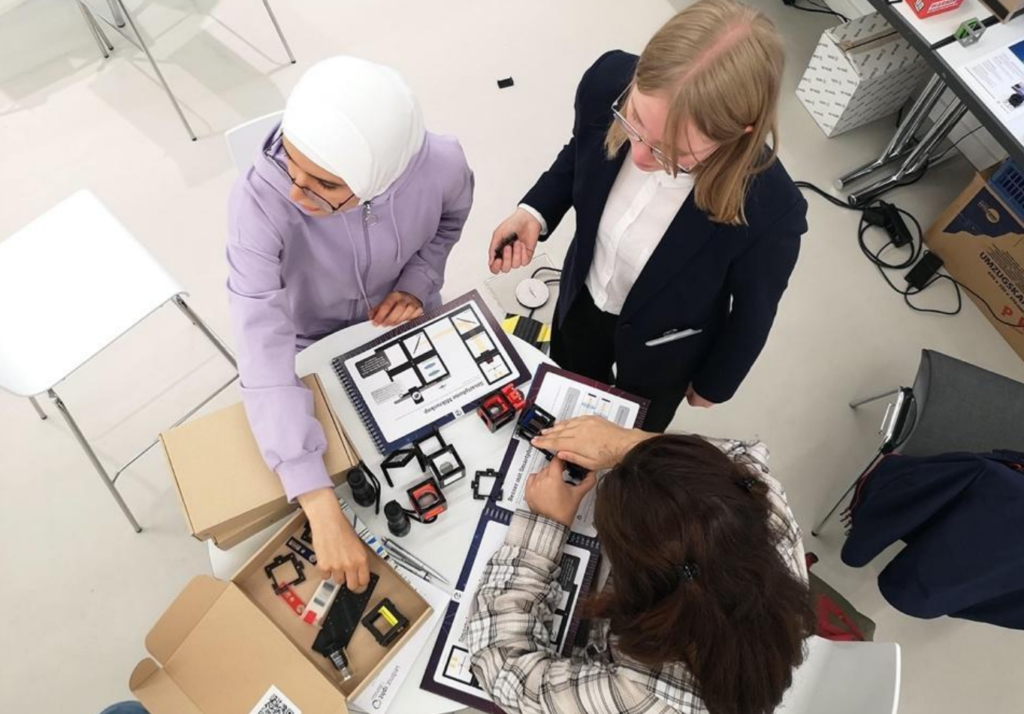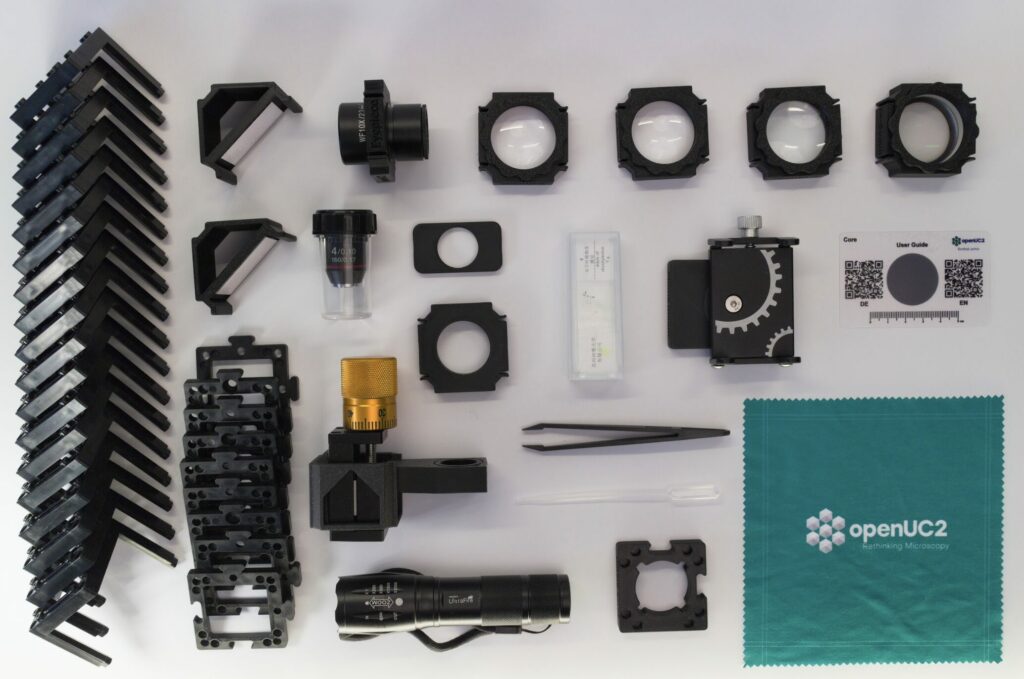coreBOX
NEW
Overview
The CoreBox is your entry point into the world of light. With a set of modular cubes, lenses, and mirrors, you can build everything from simple telescopes to projectors and even your first smartphone microscope. Designed as the foundation of the Discovery Line, the CoreBox makes optics tangible, repairable, and endlessly expandable.
Just as Arduino democratized electronics, the CoreBox democratizes optics: intuitive, modular, and open-source.Same platform, next level – extend any Core setup without replacing parts.
Modular system – UC2 cubes host lenses, mirrors, and optical components. Snap them together to create optical setups in minutes.
From basics to microscopes – start with simple experiments (focal length, image formation), then scale to telescopes and microscopes.
Smartphone integration – capture, analyze, and share your own images using the included phone adapter.
Scalable & repairable – print new cubes or swap lenses as you iterate. Nothing becomes obsolete.
Community-driven – join hundreds of educators, students, and makers sharing new modules, upgrades, and experiments.


Core
Solution
With Core we present a modular optics educational kit in which optics becomes tangible. Starting with the core elements, you learn the function of lenses, mirrors and objectives before the individual modules are assembled into complex optical setups such as telescopes and microscopes. Not only do you learn the basic physical principles in a playful way, but you also directly expand your biological knowledge by imaging self-fabricated or your own biological samples. With your own mobile phone, you can directly take the picture of the sample and take your first steps as a data scientist by processing this raw data.
What's inside the coreBOX
Cubes & Optics
- 2 × 45° Mirror (fixed, front surface)
- 2 × 50 mm Lens
- 1 × 100 mm Lens
- 1 × –50 mm Lens
- 1 × Eyepiece
- 1 × RMS Objective Lens (4×, NA = 0.1)
Adapters & Holders
- 1 × Universal Smartphone Carrier
- 1 × Sample Mount
- 1 × Z-stage (25 mm travel)
Accessories
- 10 × Puzzle Base-Plates
- 2 × Prepared Samples in 1 × Sample Box
- Sample Preparation Kit
- 1 × LED Torch
- Lens Cloth
- M3 Screwdriver
- QR Code with tutorials & open-source documentation



